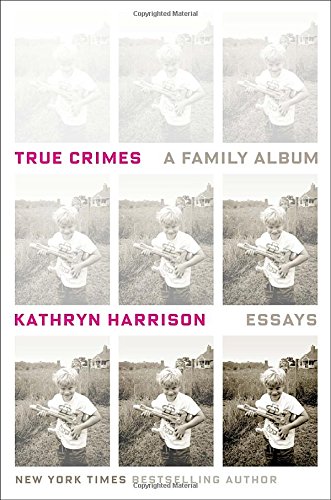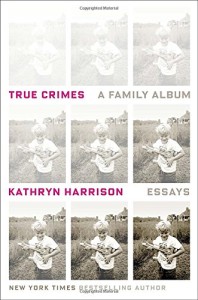
Kathryn Harrison on Her Favorite Biblical Characters and the Wound of Incest
 The essays in the new collection True Crimes: A Family Album by Kathryn Harrison were written over a period of 10 years and for different publications. Yet as a collection, they have a strong coherence. Both serious and surprising, these essays capture the moments and impulses that shape a family. In “Keeping Vigil,” Harrison reflects on the loss of her beloved father-in-law, and how he managed to repair something her own father had broken. In “Holiday Lies,” she describes the uneasy but necessary task of lying to her children about Santa Claus and the Tooth Fairy, withholding certain truths to protect their innocence. In “Mini-Me,” she writes about how the birth of her youngest daughter—who used to pry open the author’s eyes—finally allowed her to understand her own mother’s complicated attitudes about parenting. And in “True Crime,” Harrison writes for the first time in almost two decades about her affair with her father, and how she has reckoned with the girl she once was. Lilith fiction editor Yona Zeldis McDonough asks the author, best known for her tell-all autobiography The Kiss (1997) some questions.
The essays in the new collection True Crimes: A Family Album by Kathryn Harrison were written over a period of 10 years and for different publications. Yet as a collection, they have a strong coherence. Both serious and surprising, these essays capture the moments and impulses that shape a family. In “Keeping Vigil,” Harrison reflects on the loss of her beloved father-in-law, and how he managed to repair something her own father had broken. In “Holiday Lies,” she describes the uneasy but necessary task of lying to her children about Santa Claus and the Tooth Fairy, withholding certain truths to protect their innocence. In “Mini-Me,” she writes about how the birth of her youngest daughter—who used to pry open the author’s eyes—finally allowed her to understand her own mother’s complicated attitudes about parenting. And in “True Crime,” Harrison writes for the first time in almost two decades about her affair with her father, and how she has reckoned with the girl she once was. Lilith fiction editor Yona Zeldis McDonough asks the author, best known for her tell-all autobiography The Kiss (1997) some questions.
YZM: Was this your unconscious goal all along—to have these disparate essays form a whole—or did the idea for the collection grow out of what you had written?
KH: Pulling together essays for the first collection, Seeking Rapture, taught me how to assemble the second. In each case, the first issue to address was content. For the first, when I reviewed all the short pieces I wrote between 1992 and 2002 I saw that what I’d suspected was true: All the better essays were driven by unconscious need—not in response to an editor’s idea. For Seeking Rapture I kept perhaps 50% of the pieces I’d written; it came out in 2003. From that point forward, I wrote only what I couldn’t help writing. Essays that were completely personal, completely me, without anyone else’s input—for the first draft anyway.
By 2014, I had a baker’s dozen that felt complete; they hung together—thematically—as a chapter in a life, because they were all written during that chapter. The next challenge was to sequence the parts so they came together in a narrative arc. The collection doesn’t have a plot, not the way a novel does, but it is assembled with the intention of creating an emotional arc: conflict, rising tension, crisis, denouement. This was difficult, and I don’t know how I did it, or how to judge how successfully I did it. I know only that it took a lot of effort for something accomplished intuitively.



